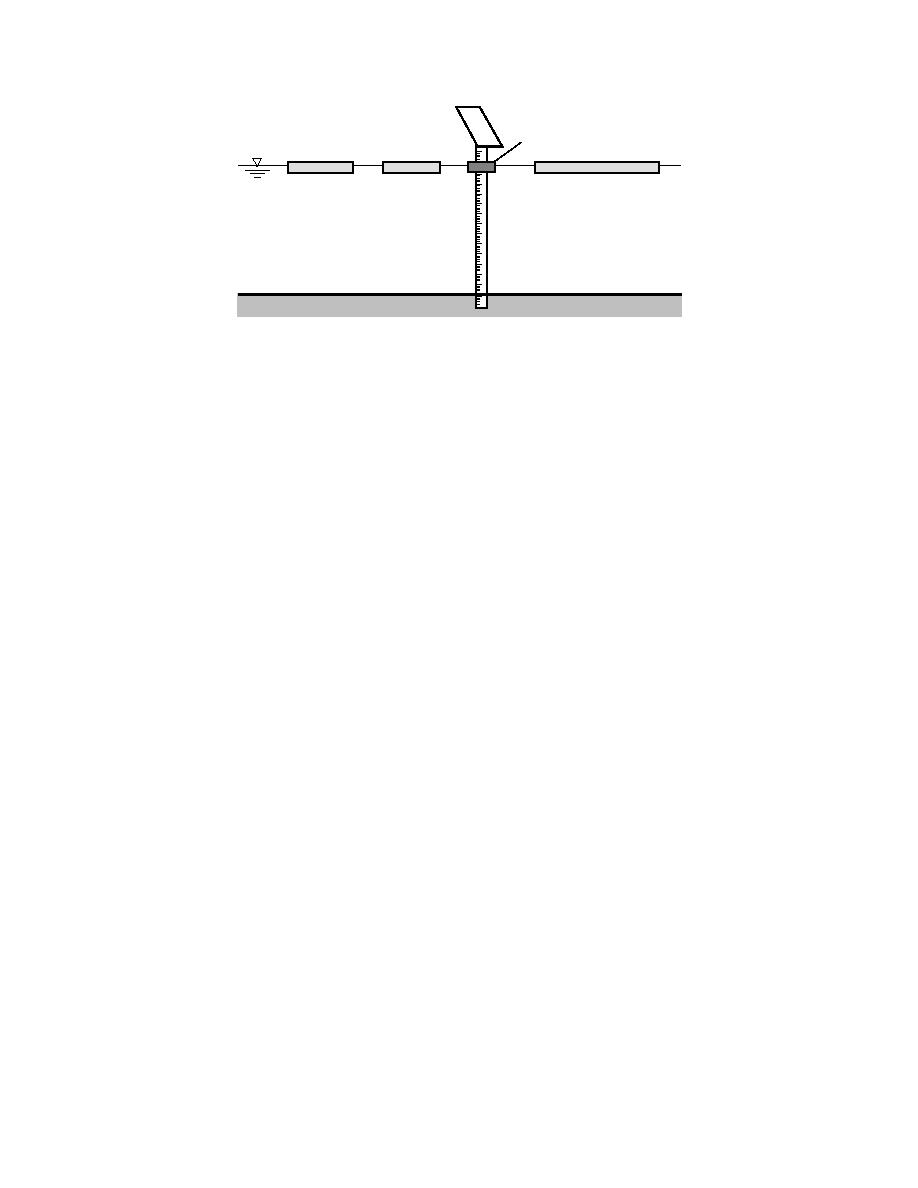
Solar
Panel
Float
Ice
Graduated
Rod
Stream Bed
Figure 13. Conceptual view of maximum stage gage.
a known datum. A perforated cup or cone filled
the rod, and heating coils could be put inside the
with regranulated cork or similar substance is at-
rod to help keep ice from forming on the rod.
tached to the lower end of the staff. As the water
With either of these devices, the stage could be
level rises within the pipe, the cork is floated out
read at a later date as time and weather conditions
of the cup, and it will adhere to the walls of the
permit, as long as a flow with higher stages does
pipe and the staff at the highest level that the wa-
not occur in the interim. One drawback is that the
ter reaches. The staff is removed from the gage and
date and time of the peak must be estimated. Sev-
read as soon as the water level drops to safe lev-
eral such devices could be put into place along a
els. These gages are low-cost, with reportedly good
relatively short stretch of river to obtain jam pro-
reliability and low maintenance. Keeping the wa-
files, or a network of such devices could be used
ter within the pipe liquid is important during win-
to supplement USGS gaging locations for record-
ter operation, perhaps by heating the pipe or in-
ing the peak stages associated with ice jams at
stalling a solar cell at the top of the pipe to power
known jam locations, since USGS gages are not
heating coils or a small bulb.
always located near a jam. The gages would need
Another possible maximum stage recorder
to be accessible on foot.
would be an adaptation of a maximum-minimum
stage gage described by Zabilansky et al. (1992),
Air and water temperature
in which a float of some type is fitted between two
Air and water temperature were the next two
washers over a 3/4-in. (19-mm) pipe that is in-
most commonly desired parameters for monitor-
stalled in the streambed. During the winter, ice
ing. Remote monitoring of each is already quite
attaches to the float and, as the float is moved up
readily done at DCP sites. In the survey, the in-
and down by ice action or waves, the washers are
strumentation already in use appears to be accept-
pushed up and down on the pipe, recording wave
able. There are reported occasional problems with
maxima and minima. A similar device could be
thermistors used in conjunction with DCPs. It is
used to record maximum stage during an ice (or
unknown whether these problems are with the
open-water) event. A conceptual drawing of such
thermistors themselves, with the associated equip-
a device is shown in Figure 13. The greatest chal-
ment at the DCP site, or due to other factors such
lenges to implementing such a device is to design
as poor or improper maintenance of the equip-
the rod to withstand the lateral and uplift forces
ment.
exerted by ice and keep the float from freezing to
the rod. The use of a dark material for the float
Ice thickness
and rod would help avoid freezing of the float to
Ice thickness is currently most frequently mea-
the rod. The float would require some type of
sured either by drilling through the ice cover and
spring mechanism that would prevent it from slid-
measuring the thickness or by visual inspection
ing down the rod when stage recedes, but allows
from the shore or other vantage point. The short-
the observer to release the spring to reset the float
comings of both methods were pointed out ear-
every year (or every flood event if desired). A so-
lier. Several other techniques have been used in
lar collector panel could be mounted to the top of
this and other countries (Adams et al. 1986) that
21



 Previous Page
Previous Page
